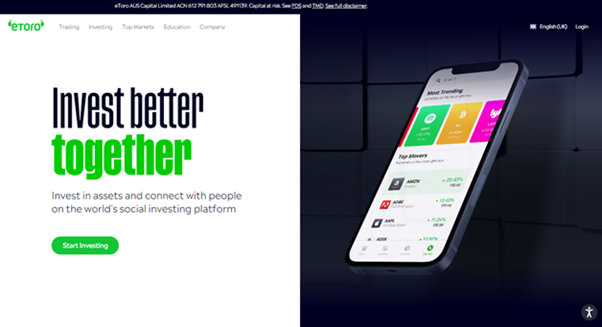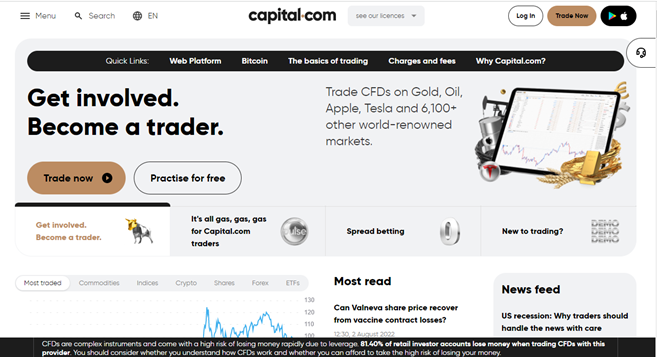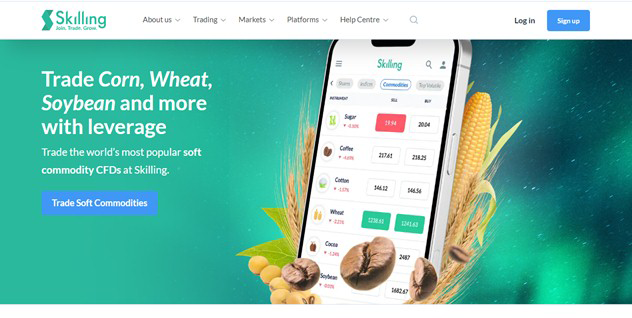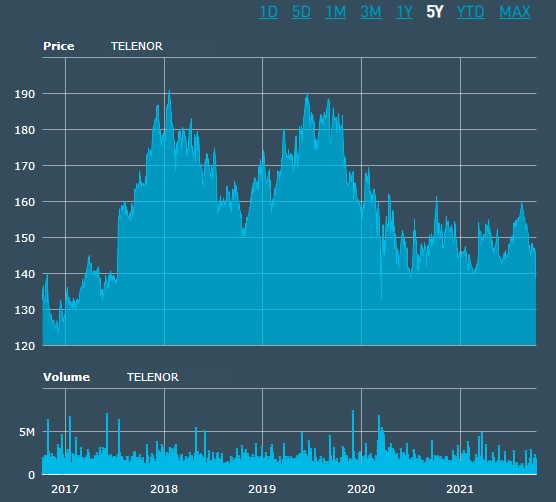How to buy Telenor stocks in 2025

Telenor is a Norwegian majority government-owned telecommunication company that provides mobile telephony, data, and media communication services in nine countries in the Nordic and Asia regions. The company operates in Norway, Sweden, Denmark, Finland, Thailand, Malaysia, Bangladesh, Pakistan, and Myanmar. As of October 2021, the company had 188 million total subscribers. The company is headquartered in Fornebu, Oslo, and its stock is listed on the Oslo Stock Exchange (OSE) under ticker TEL. In the U.S, its stock is traded on the over-the-counter market under ticker TELNY.
The article details the important aspects of Telenor’s business, guides you on how to buy its stock, and explains why you should invest in it.
How to Buy TELNF Stocks in 5 Easy Steps
-
1Visit eToro through the link below and sign up by entering your details in the required fields.
-
2Provide all your personal data and fill out a basic questionnaire for informational purposes.
-
3Click 'Deposit', choose your favourite payment method and follow the instructions to fund your account.
-
4Search for your favourite stock and see the main stats. Once you're ready to invest, click on 'Trade'.
-
5Enter the amount you want to invest and configure your trade to buy the stock.
Best Reviewed Brokers to Buy Telenor Stocks
1. eToro

eToro is one of the most prominent social investment networks, with a mission to improve investors' knowledge and activity regarding finance. Since its inception in 2007, eToro has become the premier investment platform for novice and experienced traders, with a user base of over 17 million. You can read our full eToro review here.
Security and Privacy
When choosing an investment platform, security is among the biggest factors to consider. Since eToro is regulated by the Financial Conduct Authority (FCA) and the Cyprus Securities and Exchange Commission (CySEC), you can be assured that your funds and personal details are secure. Furthermore, eToro SSL encrypts all submissions to safeguard against hackers trying to intercept confidential information. Finally, the platform has two-factor authentication (2FA) to ensure the users’ accounts are safe.
Fees & Features
Both inexperienced and seasoned investors can take advantage of eToro's extensive library of cutting-edge trading methods. For instance, beginners in trading can take advantage of CopyTrading available on eToro as it allows them to mimic the actions of more experienced traders. Those with trading experience will be glad to find that eToro provides access to many markets, such as stocks, currencies, and cryptocurrency, all from one platform. Also, eToro is a commission-free service. However, the platform charges a monthly fee of £10 for inactivity to promote active trades on the platform.
| Fee Type | Fee Amount |
| Commission Fee | 0% |
| Withdrawal Fee | £5 |
| Inactivity Fee | £10 (monthly) |
| Deposit Fee | £0 |
Pros
- Copy trading feature
- SSL encryption to protect users' information
- Trading is commission-free
Cons
- Limited customer service
2. Capital.com

Capital.com, which originated in 2016, is an excellent multi-asset broker. With over 5 million users, it has established itself as a low-cost platform with low overnight fees, tight spreads, and 0% commission. You can read our full Capital.com review here.
Security and Privacy
Capital.com is an FCA, CySEC, ASIC, and NBRB-licensed corporation dedicated to providing the most effective trading experience in the world. It shows that users' data is secured and hidden on Capital.com, since the site follows stringent criteria to achieve this goal. Capital.com takes client data security seriously, and one way it does this is by complying with the PCI Data Security Standards.
Fees & Features
Capital.com offers a wide variety of no-cost brokerage services. Its financial policies are transparent. Any fees you incur will be made clear before you pay them. Capital.com's principal costs come from spread charges, which are often low compared to competitors. The broker's mobile trading app features an AI-powered tool that gives clients personalized trading information by employing a detection algorithm. In addition, Capital.com's multilingual customers can get in touch with a representative via email, phone, or live chat.
| Fee Type | Fee Amount |
| Deposit Fee | £0 |
| Commission Fee | 0% |
| Inactivity Fee | £0 |
| Withdrawal Fee | £0 |
Pros
- Efficient email and chat support
- MetaTrader integration
- Commission-free trading
Cons
- Majorly restricted to CFDs
3. Skilling

Skilling is a multi-asset broker with significant growth. The broker offers excellent trading conditions regarding platform features and products available to experienced traders. Skilling now provides Forex, CFD, Stock, and cryptocurrency trading six years after its inception to individual investors. You can read our full Skilling review here.
Security and Privacy
When looking for a broker like Skilling, it is essential to check the broker's regulatory standing. Skilling is administered by the Financial Conduct Authority (FCA) and the Cyprus Securities and Exchange Commission (CySEC). In addition, the money that traders deposit into their Skilling accounts is held in a completely independent financial institution. For maximum safety, Skilling only uses top-tier financial institutions for this purpose. Tier 1 capital is the industry benchmark for measuring a bank's soundness.
Fees & Features
Skilling does not charge commissions for trading equities, indices, or cryptocurrencies. The platform charges Spreads which vary based on the share, but are typically very reasonable. Skilling offers two distinct account options for FX and metals CFD trading. The Standard Skill account has significantly larger spreads but no commissions. The Premium account charges commissions on spot metal and FX CFD trades for decreased spreads. Additionally, Skilling provides a demo account, mobile applications, and a trade assistant.
| Fee Type | Fee Amount |
| Commission Fee | £0 |
| Withdrawal Fee | Varies |
| Inactivity Fee | £0 |
| Deposit Fee | £0 |
Pros
- Great platform choice
- Demo accounts
Cons
- High Spreads
- Service is unavailable in many countries, including the US and Canada.
Everything You Need To Know About Telenor
Investors gather vital information about the company such as its history, business strategy, revenue sources, and the stock’s recent performance before buying it. Keeping yourself informed about the company and industry-specific developments can help you make informed and the right investment decisions as you would avoid investing on a hunch.
Telenor History
Telenor, named Telegrafverket, was founded by the Norwegian government in 1855 as the sole provider of telegraph services, to set up a quick communication system across the country. By 1860, the telegraph had reached most cities of Norway. The first telephone service was launched in Norway in 1878.
In the subsequent years, telegraph and telephony services continued to expand in Norway. In 1901, the Telegraph Act authorised the Norwegian state to exclusively run telephony services in Norway. Between 1900 and 1960 various milestones in telephone services were achieved: telephone exchanges were set up and satellite telephonic connection between Norway and the U.S was established.
The company launched Norway’s first manual mobile telephone in 1966. Telenor changed its name in 1969 from Telegrafverket to Televerket. In 1974, the company took over Andebu Telephone Association, the last private telephone operator in Norway. The company expanded its operations internationally and entered Russia in 1992 by acquiring a 13% stake in the Russian operator Northwest GSM. Between 1995 and 1997, the company started operations in Ireland, Austria, Montenegro, Bangladesh, and Greece.
The company became part of the consortium in 1997 to develop mobile networks in Germany and Ukraine. In the next two years, it launched two satellites, Thor II and Thor III to support its operations. In 2000, the Norwegian government reduced its ownership of the company to 62.4%, and the company was listed on the Oslo Stock Exchange. In the same year, the company entered Thailand and Denmark.
In 2001, the company left Germany and Ireland. It entered Pakistan and wound up its operations from Greece in 2004. Telenor achieved a milestone of reaching 100 million subscribers in 2006, the year it entered Sweden and Serbia.
In 2008, Telenor bought a 60% stake in Unitech Wireless (India) and entered the Indian market under the brand Uninor. The company surpassed 100 million subscribers in Asia in 2011. Telenor’s foray into international markets continued as it entered Bulgaria in 2013. In 2014, the company entered Myanmar, and in the same year, Telenor bank became the first online bank to start its operations in Serbia. The company disposed of its business in India in 2017 and sold it to Bharti Airtel, an Indian telecom operator. In 2021, it exited Myanmar following a military coup that resulted in an uncertain business environment in the country.
What Is Telenor’s Strategy?
Telenor’s strategy and ambitions are driven by three critical pillars: growth, modernisation, and responsible business. Keeping in view its strategy, Telenor strives to grow and modernise its core business while improving its efficiency.
As part of its strategy, the company’s management aims to attain up to 2% traffic and subscription revenue growth by 2022. The new growth opportunities that the company can capitalise on include 5G-related research & development, technology advancements, and exploring new capabilities.
Being a responsible business entity also forms one of the main pillars of its strategy. The company focuses on being a socially responsible organization and launches development or other beneficial projects for the areas close to its business operations.
Telenor has strategically created two regional hubs, Nordic and Asia hubs. Managed by experienced managers, the hubs focus on the growth in their respective regions and ensure that the businesses follow the guiding principles and priorities set centrally by the management.
How Does Telenor Make Money?
Telenor earns revenues from its operations in nine countries that include Norway, Sweden, Denmark, Finland, Thailand, Malaysia, Bangladesh, Pakistan, and Myanmar. The company divides its revenue sources into the following categories:
- Mobile operation services: Voice & non-voice traffic, outbound, inbound & national roaming, service provider and mobile virtual network operators, and others.
- Mobile operation goods: Sales of handsets and other consumer equipment.
- Fixed operation services: TV and data services, connection charges for cable, DSL, and fibre, and others.
- Fixed operation goods: Sales of customer equipment.
- Prepaid and postpaid mobile subscriptions: Advance payments for subscriptions and payments received after the issuance of invoices to customers.
How Has Telenor Performed in Recent Years?
Telenor stock is flat at its current price of NOK 138 compared to NOK 134 five years ago on 12th October 2016. During the 5-year period (between October 2016 and October 2021), the stock tested the highs of NOK 185 in 2017 and 2018 and then twice again in 2019.

Source: Euronext.com
Where Can You Buy Telenor Stock?
You need to open an account with a stockbroker to buy Telenor stock. Stockbrokers offer different types of accounts, such as cash account, margin or leveraged account, and specialised investment accounts.
You need to browse the website of the broker to find out the types of accounts it offers. Most brokers offer three versions of accounts: basic, advanced, and premium - each priced differently. The basic account provides minimal features while advanced and premium ones provide extra features or services, such as the services of an expert trader to aid you in your trading.
Telenor Fundamental Analysis
Fundamental analysis of a company provides you with valuable insights into the fair value of its stock, which can help you determine whether the stock is cheap or expensive at its current price. The most common fundamental metrics investors analyze include P/E ratio, revenue, earnings, earnings-per-share, dividend yield, and cash flow.
Telenor’s Revenue
Revenue measures the monetary value of products or services a company sold during a particular period. Investors prefer investing in companies with a history of consistent revenue growth as it depicts strong demand for the company's products or services.
Revenue is also commonly called sales or top line and is usually the first item on the income statement issued by the company. Telenor reported revenues of NOK 27.1 billion in Q2 2021.
Telenor’s Earnings-per-Share
Earnings per share or EPS represents the earnings or income available for each share of common stock outstanding. The metric is calculated by dividing the net profit, less preferred stockholders' dividends if any, by the average number of common stock shares outstanding in a period. For example, if a company reported a net profit of $10 million while the average number of common stock shares outstanding during the period was $1 million, its EPS would be 10. This means that $10 earnings are available for each outstanding share.
You can find the EPS measure on the income statement of the company and is often presented in two forms: basic and diluted. The diluted EPS differs from the basic in the calculation of the average number of common stock shares outstanding by including convertible securities such as preferred stocks and bonds in the outstanding shares, which dilutes the measure.
Stocks with high growth in earnings per share suggest high earnings growth and can be a decent investment option. Telenor reported earnings per share of NOK 1.51 in Q2 2021.
Telenor’s P/E Ratio
The price-to-earnings or P/E ratio calculates the price multiples at which a stock is trading relative to its earnings per share or EPS. The metric is calculated by dividing the stock's price by earnings per share. For example, if a stock is trading at $50 per share and its EPS is $5, its P/E ratio would be 10x. This means that the stock is trading at 10 times its EPS.
The P/E ratio is usually calculated on a trailing 12-month basis, which means that the EPS of the previous 12 months is used to calculate it. Telenor’s TTM P/E ratio was 18.41x as of October 11, 2021.
Telenor’s Dividend Yield
The cash distributions by a company from its profit to its shareholders are called dividends. The board of directors have the authority to declare dividends in accordance with the company's dividend policy and keeping in view the business condition. Investors who hold the stock before the ex-dividend date are eligible for getting dividends declared by the company.
Dividend yield represents the annual dividends per share a company paid out, expressed as a percentage of the stock's market price. It is calculated by dividing the annual dividends by the stock's current price and multiplying the result by 100 to express the metric as a percentage.
Telenor’s trailing 12-month dividend yield as of October 11, 2021, was 6.48% with a payout ratio of 73%.
Telenor’s Cash Flow
A company's free cash flow is calculated by deducting capital expenditures from its operating cash flows. Positive and high free cash flows is an encouraging sign and mean that a company generates sufficient cash from its operating activities to fund its capital expenditures as well as dividends and interest payments.
You can view the company's cash & cash equivalents figure on the cash flow statement, which denotes the amount of cash it holds at the time of the preparation of the statement. The company had a total free cash flow of NOK 2.1 billion at the end of Q2 2021.
Why Buy Telenor Stock?
Telenor stock can be an appropriate investment prospect because of its profitable business and vast operations in the Nordic and Asian regions. Here are some of the reasons why you should consider investing in Telenor stock.
- The company generated a healthy 2% revenue growth in Subscriptions & Traffic (S&T) and added 2 million new subscribers to its customer base during Q2 2021.
- The company has a strong financial position as it had NOK 2.1 billion free cash flows in Q2 2021.
- Telenor Group has been paying out consistent dividends for many years, which makes it a decent stock for dividend investors.
Expert Tip on Buying Telenor Stock
“ Telenor stock virtually remained flat at its October 2016 levels in 2021, which may give you an impression that the stock is inappropriate for long-term investment. However, the stock has been giving reasonable dividends each year to its shareholders, which should compensate its shareholders adequately. You can increase your return by buying the stock on dips to increase your returns from capital gains and also get dividends paid out by the company. If you want to open short-term positions in the stock, you should study its price action and can also consider trading the short-term company or industry-specific catalysts. ”
5 Things to Consider Before You Buy Telenor Stock
There are some time-tested tips that can help you avoid the common investment pitfalls and enable you to earn higher returns on your investment. You can consider employing the following tips before buying Telenor stock.
1. Understand the Company
Understanding the company means becoming aware of its business activities, competitive environment, financials, risks, strengths, and the company and industry-specific factors. When you get acquainted with the important details about the company, you would be able to make better investment decisions.
2. Understand the Basics of Investing
Understanding the basics of investing is essential to your investing strategy as it will enable you to generate returns while keeping your risk low. One of the fundamental principles of investing is to create a portfolio of stocks from different sectors, which will diversify your portfolio and spread your risk across many disparate stocks. If you want to trade for the short term, you can employ basic risk management strategies, such as setting up stop-loss points in each of your trades, which will limit your downside risk.
3. Carefully Choose Your Broker
Choosing an appropriate broker for your investment is essential to your success as a trader or investor. Brokers try to distinguish themselves by providing different features to traders and investors. Among the countless number of brokers available on the market, it can be difficult for you to select the best one. Here are some of the features that your broker should offer:
- Be registered with a local regulator.
- Access to an advanced trading platform that works across all operating systems and devices, including smartphones.
- Low trading fees, commissions, and spreads, which will lower your trading costs.
- Access to trading a vast range of financial securities.
- Easy and popular deposit and withdrawal methods.
4. Decide How Much You Want to Invest
Experts advise against putting all your money in a single stock as it would expose you to high risk. If you find an attractive investment opportunity, you should invest only a portion of your money to reduce your dependence on the risk and return of the single asset. If you are an intraday or short-term trader, you should undertake only those trades that have a risk-reward ratio of at least greater than two. Expert traders only risk a maximum of 1 to 2% of their account per trade, which ensures that they don’t sustain huge losses.
5. Decide on a Goal for Your Investment
You need to set up an investment goal, which will allow you to create a customized strategy to achieve it. For example, if you are in your twenties and want to save for your retirement until age 60, you can make a strategy to save some money from your paycheck each month and put it into a retirement account managed by a fund manager. Based on your goal to save for your retirement and keeping in view your current age, your pension fund manager can decide to adopt an aggressive investment strategy by allocating a higher portion of your capital to stocks to achieve high returns as you can afford to take risks at an early stage of your career. So, you should decide on a reasonable goal that can be achieved relatively easily without employing high-risk investment strategies to earn higher returns.
The Bottom Line on Buying Telenor Stocks
Telenor Group is one of the largest companies by market capitalization in Norway. The company has a strong business driven by its technological capabilities and superior services to its customers. The company has been regularly generating great financial results, which is a testament to its robust business model and strategy. The company is on track to achieve its 2021-22 targets for growth in organic subscriptions and traffic revenues, EBITDA, and Capex to sales ratio.
If you want to buy Telenor stock, you need to open an account with a stockbroker. You can open your account online by filling out a form and uploading your identification documents, such as proof of residence and your ID card. After the successful verification of your documents, your broker will open your account, which you can fund using any of the popular deposit methods.
If you want to explore more interesting stocks, you can browse our website that contains in-depth reviews of hundreds of international stocks, which can earn you favourable returns.
Frequently Asked Questions
-
Telenor stock can move in response to a variety of factors, including Telenor’s entry to a new market, expansion in the network or technological capability, entry of a competitor in the market, among other factors.
-
Telenor is exposed to a number of risks that include geopolitical and regulatory risks resulting from its overseas operations, foreign exchange risks, spectrum licensing risks, macroeconomic risks, among others.
-
Telenor stock provides shareholders with regular annual dividends along with a chance to get capital gains. The key is to buy the stock on dips to lower your entry point to get dual returns.
-
You can trade Telenor stock for the short term by keeping yourself updated about any short-term trigger that can influence its price. In the absence of any triggers, you can analyze its price chart and use technical indicators to trade Telenor stock.
-
The payout ratio of 73% by Telenor suggests that the company paid out 73% of its profits as dividends during the period.






